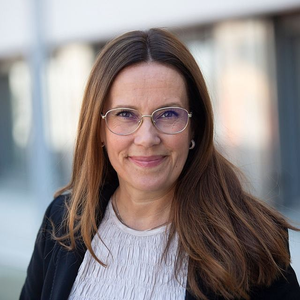Since announcing its formation six months ago at the Aquaculture Americas Conference in Seattle, the Coalition of U.S. Seafood Production (CUSP) has found that there is certainly strength in numbers when advocating as a unified industry. Coalition members have met twice with federal agencies and legislators in Washington, D.C. this spring to support government action to grow domestic aquaculture, and they are optimistic about progress made to date.
“CUSP has already had an impact,” said Don Kent, President of Hubbs-SeaWorld Research Institute. “There has been a lack of cohesiveness in the aquaculture industry with the different players not talking to each other. CUSP was conceptualized as representing a horizontally and vertically integrated business community, spanning different aquaculture methods and seafood species, and the entire supply stream -- feed and equipment companies, fish farmers, seafood distributors, retailers and restaurants. CUSP is the aquaculture industry in a nutshell – and your voice gets heard more effectively the larger the group represented.”
In March, a group of CUSP members, including representatives from the Soy Aquaculture Alliance (SAA), Icicle Seafoods, Bell Aquaculture, and the Maine Aquaculture Association (MAA), met in Washington, D.C. with newly appointed NOAA Administrator Dr. Kathryn Sullivan. The group urged for finalization of the Fishery Management Plan for Regulating Offshore Marine Aquaculture in the Gulf of Mexico, which was approved by the Gulf Regional Fisheries Council and sent to NOAA in 2009. Although the agency could not specify when the Plan would be finalized at the meeting, one week later the Plan was released to the Office of Management and Budget (OMB) for review, a critical step in finalization.
The group also met with Secretary of Agriculture Tom Vilsack, who encouraged CUSP to work on public/private partnerships for aquaculture demonstration projects. This subject was further discussed with Dr. Jo Handesman, Director of the White House Office of Science and Technology Policy (OSTP).
At a follow-up meeting with the OSTP in May, CUSP members, including representatives from the SAA, MAA, Zeigler Feed and Pentair Aquatic Eco-Systems, had further discussions about a workshop with industry, federal agency and NGO stakeholders. The planned workshop will explore development of commercial scale, successful aquaculture projects to demonstrate the viability of domestic aquaculture, while providing important data for environmental and economic evaluation.
In May, the group also met with OMB to present comments to the Gulf Plan submitted by CUSP’s internal working group of ocean aquaculture specialists (Hubbs-SeaWorld Research Institute, Icicle Foods, MAA and the Ocean Stewards Institute). The comments addressed what needs to be changed in the current plan so that aquaculture projects in the Gulf can be commercially viable. Once the OMB reviews the plan, it will go back to NOAA for public comment.
“In May, our CUSP group also met with Gulf region legislators to ask for their support, and I really enjoyed the engagement and seeing how much progress has been made,” said Bob Miller, Vice President of Aquaculture, Pentair Aquatic Eco-Systems. “There’s an awareness of aquaculture that didn’t exist before, and I attribute that to CUSP’s efforts. We’re seeing some movement in areas that have been stalled in D.C.
“In the past, industry participants were working against each other, and now with CUSP, we’re all in it together,” Miller continued. “Pentair is one of the largest aquaculture equipment and design firms in the world and we offer support to all methods of aquaculture – from recirculating and aquaponics systems to pond systems – and it really helps being one of the key players at the table. If we all work together, it’s good for the industry and all stakeholders.”
Chris Stock, Sales Manager at Zeigler Feed, agreed that there has been progress. “The feeling on Capitol Hill was friendlier and more receptive to CUSP’s interests. We all felt that the staff members we met with are more positive and knowledgeable about issues and why aquaculture is important. It’s on the radar now.”’
Stock also points out that CUSP has brought together a broad swath of industry companies that are experienced with global aquaculture. “This is an important perspective. A lot of us in CUSP are U.S.-based, but we’re involved with aquaculture on a global scale and are savvy about how it works. Zeigler was recognized by the Department of Commerce as Small Business Exporter of the Year for 2013, and we target our business in Asia, Africa and Europe because that’s where the growth is. But we would love nothing more than a healthier domestic market for our products.”
The CUSP members involved in these D.C. meetings all expressed a great deal of respect for Steven Hart of the Soybean Aquaculture Alliance, who has been pivotal in the organization of the Coalition.
“Steve has done a great job, and I’m very impressed with the way he approached challenges to organize this industry,” said Stock. “CUSP has brought together some of the most important players in the industry, and I’m very optimistic about where we’re going.”
“I’m very, very supportive of this organization,” said Kent. “It’s a real asset for expanding aquaculture in this country, and the ability to have a more secure seafood supply.”










